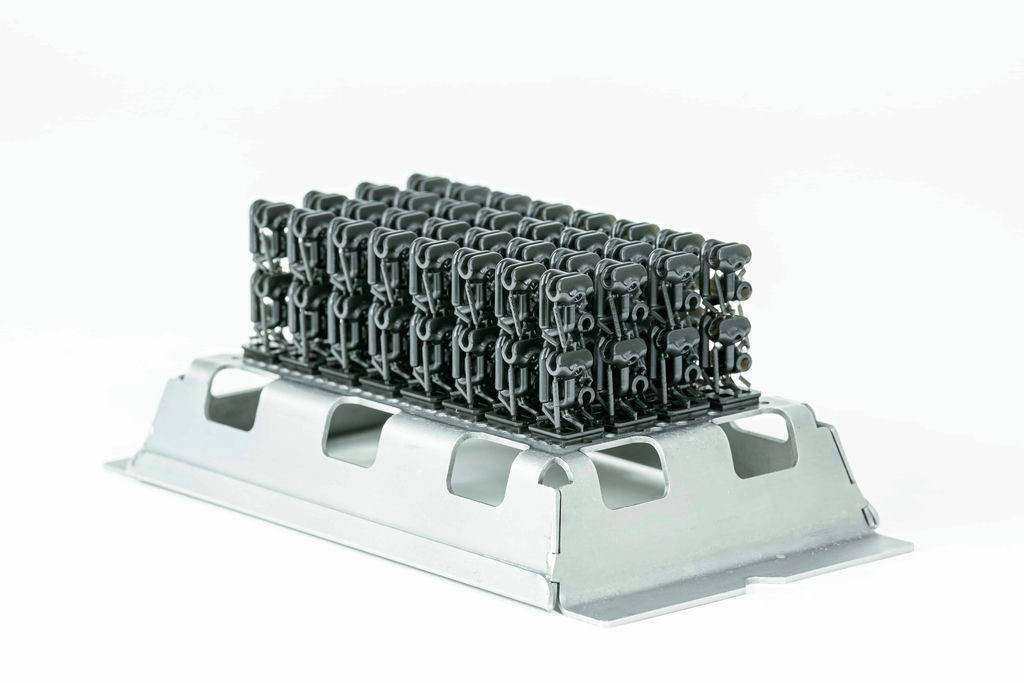While additive manufacturing (AM) has traditionally been used as a prototyping tool, its rapid maturation in recent years has encouraged many manufacturers to adopt the technology for end-use production parts across a range of applications. Much has changed with the technology, including the development of additive manufacturing processes and materials that are capable of meeting manufacturers’ standards for factors such as repeatability, reliability, accuracy, surface finish, and more. Specifically, advancements from 3D Systems are making it possible to rapidly iterate and produce durable, repeatable parts, not just using thermoplastics, but now also with advanced photopolymers with long-term stability of mechanical properties in both indoor and outdoor environments, which was previously not possible.
3D Systems’ materials scientists are engineering materials that are expanding the applications for additive manufacturing. Its rapidly growing portfolio of production-grade industrial resins for the Figure 4 printing solution are designed specifically for both batch-run, end-use part manufacturing, as well as functional and design aesthetic prototyping applications. These materials feature long-term mechanical performance and stability – up to eight years indoor and one and a half years in outdoor environments – and are suitable for demanding applications in industries such as consumer electronics, automotive and motorsports, healthcare, industrial goods, and aerospace and defense.

These advancements go beyond the Figure 4 platform. 3D Systems is also bringing these new material capabilities to its stereolithography (SLA) platforms with new production-grade acrylate resin, Accura® AMX™ Rigid Black, which was inspired in part by the advanced production application requirements of TOYOTA Gazoo Racing (TGR). This tough, long-lasting material is the first to produce large-scale additively manufactured parts with exceptional resolution, accuracy, and surface quality capable of withstanding the rigors of long-term mechanical use.
According to Alexander Liebold, group leader, production engineering & future technologies, TGR-E, Accura AMX Rigid Black allows TGR to deliver larger, complex stereolithography parts, including full-scale manufacturing aids. “Using Accura AMX Rigid Black we achieved 90% time savings and 60% cost savings in comparison to the previous handwork processes for a batch of 40 parts,” said Liebold. “Unlike other additive production technologies, parts in Accura AMX Rigid Black provide very smooth sidewalls and superior isotropic strength, critical for accurate jigs and fixtures that are in constant use. Now we can turn around any large-scale part and be confident it will perform as required, for as long as we need. This is a real game-changer for production manufacturing.”
Efficient Batch-Volume Production with Additive Manufacturing
Even with these advancements, there is more to being production-ready than material properties. Production volumes are also a significant piece of the equation. 3D Systems has solved for this as well with a software feature it calls high-density stacking, and it has been tested and validated as a viable production technology by the largest sporting goods retailer in the world.
When faced with a mold injection problem on a small component for shooting glasses that connects the frame to the lenses, French company Decathlon opted to test 3D Systems’ new 3D stacking solution to evaluate additive manufacturing for production. The stacking feature helps users print high volume batches with an efficient file preparation workflow that results in more parts out of the printer in less time.

Decathlon’s additive manufacturing lab (ADDLAB) uses 3D Systems’ Figure 4 solution across a range of applications, and according to Decathlon materials engineer Gregoire Mercusot, stacking has reduced print preparation time by as much as 80-percent: “By stacking parts we are able to print in batches of 100, and have reduced the time it takes to prepare a build from 30 to 60 minutes to just six to 10 minutes,” said Mercusot.
Additive Manufacturing Provides Depth and Breadth to Traditional Manufacturing
While additive manufacturing is unlikely to entirely replace traditional manufacturing modes used for the highest production volumes, advances in production-grade materials, technology and software have made it economically viable for manufacturers that require greater breadth of production; significant quantities of initial series production, post-series production, and spare parts production. This technology is also making it possible for manufacturers to increase the depth and flexibility of their production process, even as they are delivering parts with greater cost efficiency.
The mold injection problems Decathlon was having during previous production runs of their shooting glasses component are something they are now equipped to avoid. After conducting a feasibility study on the Figure 4 solution and stacking feature, Decathlon’s teams confirmed the productivity and economics of additive manufacturing and decided that this solution could be considered for batch-run production of the final product.
The high-density stacking capability of Figure 4 brings efficiencies of scale to post-processing as well as part building, allowing Decathlon to treat a batch of parts the same as a single part. This means the time it would take Decathlon to clean, cure, and remove the supports from a single part remains the same, even for a batch of 100 parts. Decathlon uses the Figure 4 Modular system to print stacks of 100 parts in 85 minutes, which is equivalent to just 42 seconds per part. For Decathlon’s safety glass application, it takes six minutes to clean all 100 parts, 90 minutes of hands-free time to cure them, and ten minutes to remove supports from the entire batch.
“The combination of stacking and production-grade materials makes Figure 4 ready for production,” remarked Mercusot.
The growing speed, accuracy, and versatility of additive manufacturing positions it more and more as an ideal solution for modern industrial production needs — either for complex, multi-part assemblies or small yet vital single plastic components. With 3D Systems’ innovative additive manufacturing technology, as well as its wide portfolio of tough, durable, production-grade plastics, it’s time to consider incorporating AM into your production workflows.


